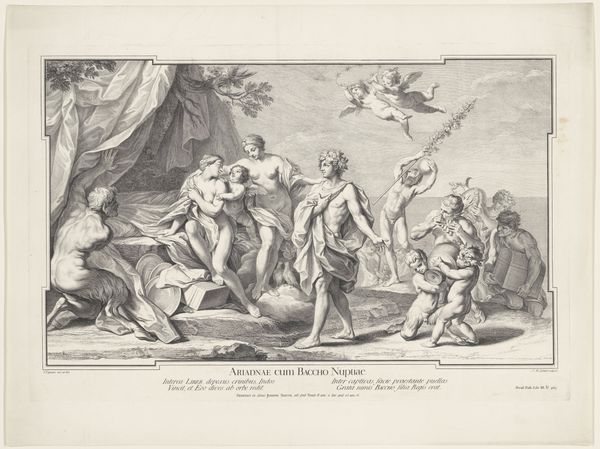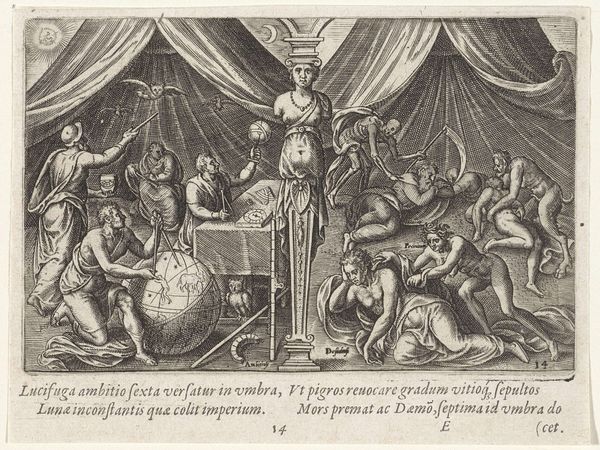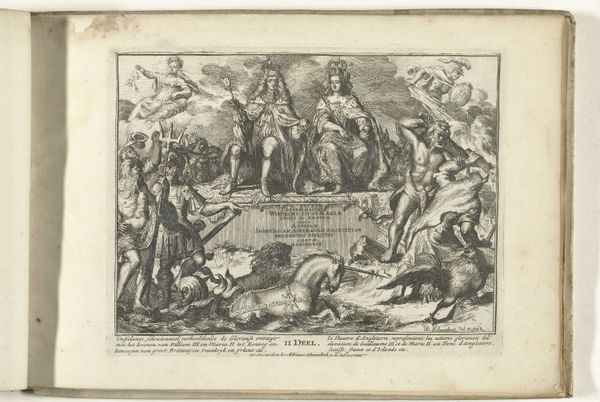
Wapen van Eugenius van Savoye omringd door allegorische figuren 1719
0:00
0:00
bernardpicart
Rijksmuseum
print, engraving
#
portrait
#
allegory
#
baroque
#
symbol
# print
#
form
#
line
#
history-painting
#
engraving
Dimensions: height 113 mm, width 197 mm, height 20 mm, width 198 mm
Copyright: Rijks Museum: Open Domain
Curator: This engraving, "Wapen van Eugenius van Savoye omringd door allegorische figuren," dating from 1719, is currently held in the Rijksmuseum collection. It was created by Bernard Picart. Editor: It’s striking. The dense composition immediately pulls you in. So many figures surrounding that central heraldic shield! The fine lines create a real sense of depth, don't you think? Curator: Indeed. It’s absolutely typical of the baroque style, particularly its function. This print served as visual propaganda celebrating the military prowess of Prince Eugene of Savoy, situating him within a long tradition of European aristocratic power. Editor: It is a fascinating convergence of the heraldic and allegorical. The careful symmetry of the shield set against the rather chaotic figures around it creates a pleasing tension. And observe how Picart uses varying line thickness to define forms and textures! Curator: Yes, but the context really enriches the viewing experience. Consider that these cherubs and figures aren’t just decorative. They embody abstract concepts like Victory, Peace, and Strength – essential attributes ascribed to Prince Eugene's identity. It speaks to how power was constructed and legitimized through visual culture during this era. Editor: A fine point. And notice the dramatic use of light and shadow. It guides the eye, highlighting key elements like the crest and the central cherub figures. The way he manipulates tonal variation is truly skillful! Curator: The engraving really showcases the ways European rulers leveraged the printing press to cement their legacies. However, the idealised representation certainly obscures the brutalities often inherent in warfare, which reminds us that history and the representation of history must be evaluated through an ethical and political lens. Editor: Yes, these allegorical representations always mask and manipulate. Yet, looking purely at the formal artistry—the use of line, the balance of light and dark—there’s still such beauty and refinement. It gives a glimpse into Picart's aesthetic skill. Curator: Considering its position in history, examining how those formal qualities promoted potentially destructive militarism is important. It provokes crucial discussion surrounding the intersections of power, representation, and war. Editor: A wonderfully multilayered artwork then—revealing much upon deeper investigation.
Comments
No comments
Be the first to comment and join the conversation on the ultimate creative platform.













